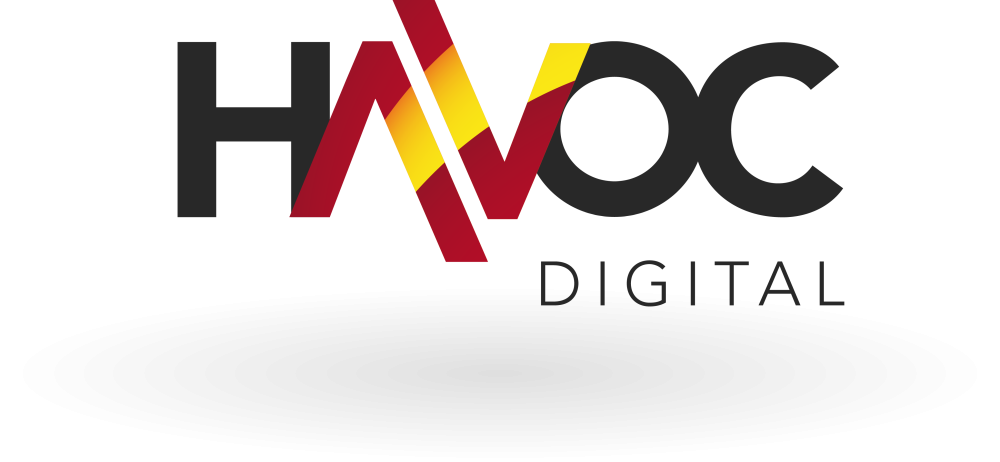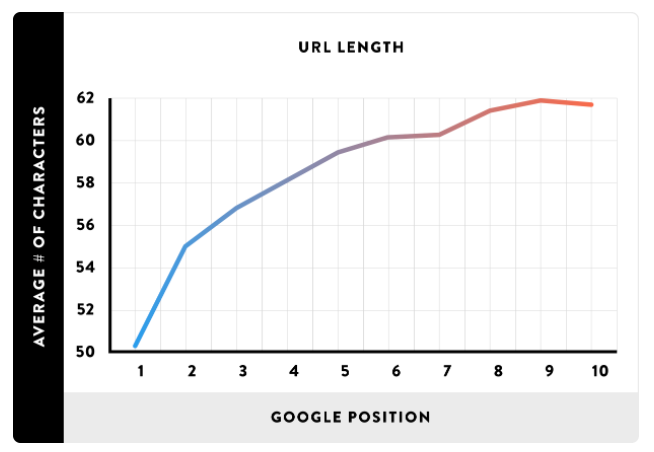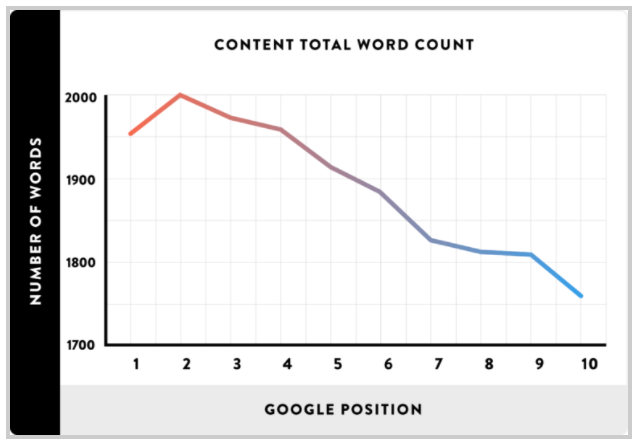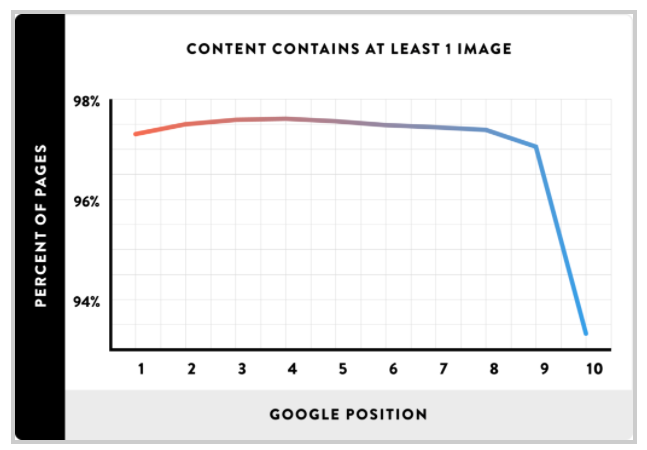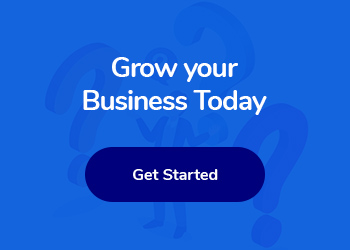24 On-Page SEO Tips for Small Business Owners
On-page SE0 Tips
One of the most obvious yet often overlooked ways to optimise a small business website is to very simply have the On-Page SEO emphasise the subject matter of the page.
For example, if you are in the business of Carpentry then make the respective pages pertinent to one specific service, be it;
- Fencing Services
- Kitchen Remodeling
- Patios or
- Pergolas
Rather than putting All your services on just one page.
This way you can maximise the subject Authority and also build up the size (pages) of your website.
I commonly ask clients if your website is the thickness of a ‘ Text Book’ or a ‘Comic Book’?
That was On-Page SEO Tip #1, more to follow…
The following Tips should be looked at in context to Basic SEO 101, addressed in my post ‘The Basics of Onsite SEO“.
“On-page SEO is the practice of optimizing individual web pages in order to rank higher and earn more relevant traffic in search engines.
On-page SEO refers to both the content and HTML source code of a page that can be optimized, as opposed to off-page SEO which refers to links and other external signals.” Moz
On-Page SEO…. URL’s
Tip #2 – Experiment With Using ONLY Your Keyword in Your URL
Back in early 2013 just prior to the roll-out of Google’s Panda Update #25, I was working with a client in the UK on 60 of his “Credit Card” sites.
*NB Some of these 60 sites were appalling, as some were just screen captures (images) of other sites but as these were inherited by us, we could only do what we could.
Shortly after the Panda roll-out, we saw a huge and obvious change in Google indexing across those 60 sites.
A handful crashed and fell out of the TOP100 rankings, however, the ones with specific target keywords and variations within the URL improved significantly with many jumping ‘pages’ up the rankings, with most attaining page one rankings almost overnight.
At the time this anecdotal realisation got us to think that this was not only a way to achieve better rankings but it could also be employed when clients suffered unrecoverable penalties as a result of the Google update.
So, we do suggest where possible, consider having your main target keyword (Exact Match) within the URL for example;
www.example.co.uk/your-exact-match-keyword.
Tip #3 – Use Short URLs
Using shorter URLs is easier for your audience (to remember) and for the search engines to index.
Analysis has indicated that shorter URLs performed slightly higher in Google than longer complicated URLs.
On-Page SEO…. Titles
Tip #4 – Have Unique Titles for each Page
One of the most common issues identified when we do a Site Audit is Boilerplate and Duplicate Titles.
With my clients, I always use the analogy of a ‘Book’, so imagine if you will, coming across a book that has the same Title for every chapter!
Naturally, most readers would be somewhat bemused and inevitably confused.
This is exactly how most search engines, and in particular Google will read such a site and thus not give it much in considering it for higher indexing in the search results.
In FACT, Google come out and clearly said so… so ‘Web Designers and Web Developers stop doing it!‘

Tip #5 – Embed Long Tail Keywords in Title Tags
Instead of utilising the specific target keyword in the Title, for example, ‘SUV Calgary’ consider ‘Premier SUV Calgary Dealer’.
The latter is a ‘long tail keyword’.
For the more competitive terms, this is a much smarter starting strategy, that will allow you to earn rankings for the long tail keyword much quicker and will facilitate, over time, the opportunity to rank for your main more competitive target keyword ‘SUV Calgary’.
Tip #6 – Keep Your Title Tag Under (Approximately) 60 Characters
Once upon a time, Google limited the Title Tag to 60 characters, this was later changed to Pixels, with the limit set at 512 pixels.
For the average person, this counting pixels could be somewhat cumbersome, so most of us still count the characters and in most cases, this still works well.
A simple case of trial and error or alternatively utilise this snippet tool to optimise your Title Tags and Meta Descriptions.
Now, a question – could the number of characters in a Title Tag impact your rankings in Google?
- No definitive data is available but a load of anecdotal evidence does seem to exist that it may have some effect.
Decide for yourself;
Top 3 positions in Google.com.au for ‘Construction Law’. (Correct at time of publishing)



Tip #7 – Put Your Keyword Early In Your Title Tag
Put your target keyword at the beginning of your Title Tag as the search engines put greater weight on keyword terms that appear at the beginning of the page.
Tip #8 – Use Title Tag Modifiers
Words and phrases that tend to get tacked onto the end of search terms are referred to as Title Tag modifiers.
For example, someone searching for a Dentist might search for things like:
- “best dentist”,
- “dentist near me”,
- “dentist reviews” etc.
Adding these modifiers to your Title Tag will aid in the site showing up at the top of the page for those search terms.
Here are a few modifiers you can use:
- “best”
- “reviews”
- the current year
- “checklist”
- “PDF”
- “guide”
- “course”
Tip #9 – Include Keyword Synonyms in H1 and H2 Tags
If during the course of optimising the page the frequency of the main exact keyword appears to be overused then replacing the exact match keyword with a synonym is advisable.
For example, if you were focusing on the main target keyword of ‘Pest Control Brisbane’, we would suggest making the H2 something like ‘Pest Treatment Brisbane’ or ‘Pest Extermination Brisbane’.
During our (Havoc Digital) online market research, we present our clients with both target keyword variations and content marketing keyword ideas to use in such circumstances.
On-Page SEO…. Content
Tip #10 – Write Content That Covers a Topic In-Depth
Once again, using the analogy that your site is like a book… well then, a site with comprehensive information, in-depth content, supporting data and researched facts will certainly out perform a shallow, sales oriented, surface level content of a book!
If you purport to be the best, the industry leader or an expert in your field then it stands to reason that you would have a wealth of knowledge that most likely would be of advantage to your audience.
Tip #11 – Focus on Keyword Frequency
As on-page SEO copywriters, we do take into account page Keyword Density and it is at times measured as a percent of the whole body of content, simply to avoid ‘spamming’ the specific target keywords within the content.
But it is unlikely that Google would use ‘Density’ as a ranking factor for their algorithm, with the more likely ‘Frequency’ metric – being the number of times a keyword appears on a page.
Keeping in mind that you are writing for your audience and it would then be reasonable that a thoughtful writer would not spam the content, then it would also stand to reason, that frequency would trump density.
Consider this;
Page 1 on your site contains the keyword ‘Furniture Removalist’ only once.
Whereas, Page 2 on your site contains ‘Furniture Removalist’ 6 times, without affecting the audience’s ability to read the content.
Therefore, which page on your site would be most likely to be recognised as the greater authority on the subject of ‘Furniture Removalist’ and therefore rank for that term?
Tip #12 – Add LSI Keywords to Your Content
LSI is the acronym for Latent Semantic Indexing which is just another way of saying ‘synonyms and closely related terms’.
By including this within your site content, it provides the search engines i.e. Google a broader understanding of what the page is about and therefore enhances that page’s subject authority.
Examples of Latent Semantic indexing can easily be seen at the bottom of most Google search returns or SERPs.
The following example is for the searched term ‘Flower Delivery Sydney’.
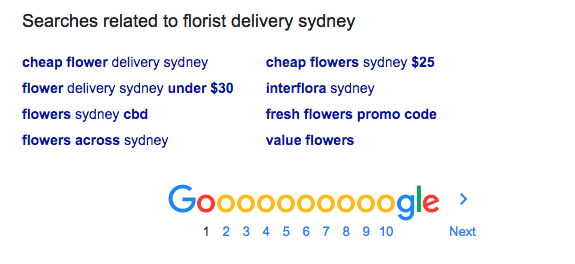
Tip #13 – Use Your Keyword In Your First 100 Words
Some old-school SEO is still valid today and this is one of those times, even if many may argue the point, but logic seems to dictate that having your exact target keyword at the top of your site’s content certainly does more good than at the bottom!
Also, when your target audience lands on the respective page they are reassured that it is relevant to their search query.
Tip #14 – Focus On Insanely Actionable Content
Nobody truly likes rants, opinion pieces, and certainly not clickbait content.
Content that is informative, thought-provoking, in-depth, researched, and helpful will be more likely to be worthy of sharing, referencing, and linking to.
And by Actionable it does not mean ‘Sales’ oriented content… buy, book, order now..
I mean content that a person can take it away and use it in their lives – business or personal.
Tip #15 – Publish Long Content
It comes as no surprise that sites with more content tend to rank higher since Google deems such sites to have greater subject authority and therefore greater worth to the sites target audience.
Many industry studies have found the very same correlation between higher content volume to higher rankings.
Tip #16 – Relaunch Old Content
This is something we have only just started to do ourselves with our older posts.
At the end of the day, it is hard to argue with the research and logic behind this – thanks to Hubspot.
Tip #17 – Update Old Content
Not only is this sound housekeeping, but appropriate as with the passage of time, the changes in your industry may make your original content out of date or worse still totally incorrect.
This also demonstrates to Google that you value the content and will induce a greater frequency of visits by the spiders to your site.
Tip #18 – Optimize E-Commerce Product Pages Like Blog Posts
One of the major issues we find with optimising eCommerce sites is the propensity of website owners to ‘Copy & Paste’ the product descriptions straight off their supplier’s/wholesalers’ website. (Plagiarism & Duplicate Content issues)
Whilst I do appreciate that in some cases the site may have thousands of products and it would be a monumental task to go back and correctly optimise and utilise original content within all the descriptions, this, however, does not prevent owners from doing so with new or updated product lines.
Adding volume content of 1,000+ words with your target keywords and variations will set you apart from all the other similar retailer’s websites.
On-Page SEO…. Images
Tip #19 – Use Lots of Images
With Google focusing more and more on user experience signals, making your content ‘Easily Readable’ means that your visiting target audience will more than likely stay on the page longer.
Utilising images breaks up the content into more manageable readable pieces.
Tip #20 – Write Image Alt Text with Keyword Variations
Many of our clients already understand that Google can not see images – just like in the Matrix movie where you only saw the code, with images being represented as big blank empty spots within the code. 
What Google does read, is the image metadata such as the image file name and the ALT text to formulate an understanding of what the image is about.
In addition, to avoid keyword stuffing (spamming), we suggest using keyword variations that are not being focused on in the body of content on the page, to further broaden the scope and number of keywords your site gets indexed for.
Tip #21 – Add Text Content To Infographic-Based Blog Posts
The major On-Page SEO issue with Infographics is that Google can not read them, as the same applies to all and any type of image-based asset… refer to Tip #20
That is why attention needs to be paid to the ALT Attributes and in this tip, in particular the ‘Description’ component.
Use this to add TEXT for the express purpose of the search engines to READ and better understand what the image/page is all about, again clearly enhancing the authority of the page on the subject.
The following infographics for Ecominerals have the Caption with the following extra TEXT content.
“Ecominerals only uses natural minerals in their makeup.
Visit the site to see their range of Natural Mineral Makeup.
https://www.ecominerals.com.au“

Visit the site to see their range of Natural Mineral Makeup.
https://www.ecominerals.com.au/
On-Page SEO…. Linking
Tip #22 – Take Advantage of Internal Linking
Link from one of your pages/post to another, particularly if the subject matter is relevant to that page.
This will aid those pages to rank.
So simple and it works.
Tip #23 – Use Outbound Links
Google’s view is that it might help your own rankings by linking out to relevant content.
One of our industry studies seems to emphasise that outbound linking may well provide your content with a modest rankings boost.
Tip #24 – Make Social Sharing Buttons Super-Easy to Find
Ease of sharing your content will induce people to do so – not doing so simply limits your content from being seen, read, and linked to by as many people as possible.

Footnote: this post has been compiled from the following sources.
backlinko.com/actionable-seo-tips
blog.hubspot.com/marketing/historical-blog-seo-conversion-optimization
seroundtable.com/google-on-external-links-ranking-benefit-22147.html
rebootonline.com/blog/long-term-outgoing-link-experiment/
